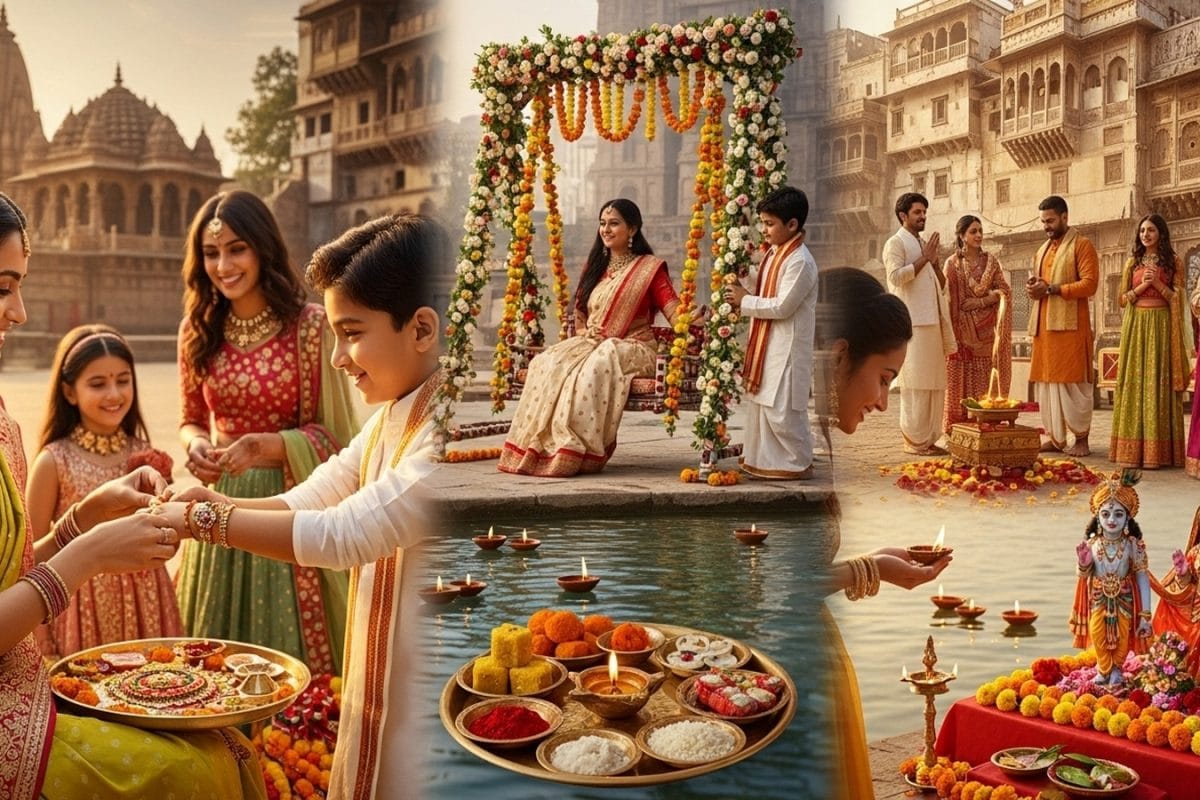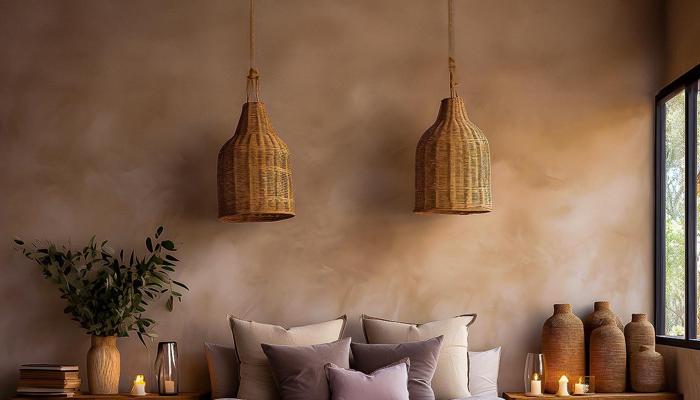Discover the magic of 8 Traditional Indian Crafts! Dive into a world of creativity and heritage from your home. Read more
Namaste, readers! In a time where everything is mass-produced and readily available,
there's a growing appreciation for things made by hand, infused with love and tradition.
India, with its rich cultural tapestry, boasts a plethora of mesmerising crafts that have been passed down through generations. The best part? Many of these beautiful crafts can be learned from the comfort of your own home.
So, ditch the screen for a while, unleash your inner artist, and embark on a journey of creativity with these eight traditional Indian crafts!
India's artistic heritage is more than just something pretty to look at; it's a story etched in every thread, every brushstroke, every carefully crafted piece. These crafts are a living testament to the skill, dedication, and artistry of Indian artisans.
Learning these crafts is not only a way to create beautiful objects but also a way to connect with our roots, preserve these traditions, and add a touch of handmade magic to our lives. From vibrant colours to intricate designs, there's a craft for everyone to explore and enjoy.
So grab your supplies, find a comfortable corner, and let's get started!
India is a country full of artistry. Every region offers a distinct culture, and distinct crafts. These crafts are being passed on since previous generations, and have their very own signature style.
What makes it interesting is that, even today, craftspeople are incorporating these into their contemporary designs. Learning a new form of art adds a dimension to our cognitive skills. This will keep our minds engaged. Even kids will be benefited if they get indulged in such activities.
They will also be able to improve their motor skills.
Block printing involves carving designs onto wooden blocks and then using these blocks to print patterns onto fabric. It's a craft known for its vibrant colours and intricate designs, with each region of India showcasing its unique motifs. Think of the Sanganeri prints of Rajasthan with their delicate floral patterns, or the earthy tones and geometric designs of Ajrakh prints from Gujarat. Learning block printing allows you to create your own custom fabrics for clothing, home décor, or even paper crafts.
The best part to start learning block printing is finding and buying the suitable materials. Get the cotton or the silk fabric that you wish to print on. You must get good quality wooden blocks of your liking. Do not forget to buy fabric paint that is suitable for the fabric you selected.
In this journey make sure to prepare or create a design that you wish to stamp and print. Practice your design and stamping on a waste cloth before going to the real project.
Originating from the Mithila region of Bihar, Madhubani painting is a style characterised by its bright colours, bold outlines, and intricate depictions of mythological figures, nature, and everyday life. Traditionally done on walls and floors, Madhubani painting now finds its way onto paper, cloth, and other surfaces. The art form uses natural dyes and pigments, adding to its earthy charm. Learning Madhubani painting allows you to tell stories through art, create vibrant wall hangings, or embellish your stationery.
This art is also associated with religious significance. Madhubani paintings are drawn with a lot of precision. If you start to create your own, you can begin with the geometric shapes and then gradually move towards intricate designs. Use brushes that are madeup of natural fibers.
Get a hold of vibrant colors to bring it to life, and practice it on paper before attempting on a canvas. Get immersed as you start to learn the art.
Warli painting, from Maharashtra, is a tribal art form that uses simple geometric shapes like circles, triangles, and squares to depict scenes from daily life, rituals, and nature. The paintings are typically done on a mud base using white pigment made from rice flour and water. Warli art's beauty lies in its simplicity and its ability to tell stories with minimal strokes. You can learn Warli painting to create unique wall art, decorate pottery, or even design your own stationery.
Traditionally, Warli painting used to be made only with white colour made up of rice flour. The background used to be red mud base. These colours used to signify simplicity of the life. As you start learning, remember that the main goal is to capture stories of daily life.
Practice your hand movements and simple shapes. With the skill of simple shapes you will be able to portray elaborate scenes with minimal elements.
Kantha is a type of embroidery that originated in West Bengal and involves layering old saris and cloth together and then stitching them with simple running stitches to create quilts, throws, and other textiles. The beauty of Kantha lies in its upcycled nature and the stories told through the different fabrics and stitches used. Learning Kantha embroidery allows you to repurpose old clothes, create unique and cosy textiles, and add a touch of sustainable style to your home.
The Kantha stitch is a very basic running stitch, yet when done across layers of fabric, it creates beautiful textures and patterns. It is about celebrating the art of recycling with a story.
Each layer of cloth in Kantha carries a story of its own, and when used together, they transform into a new one. Start by up cycling. Gather your old sarees, scraps of fabric or any other cloth materials that would otherwise be discarded.
Pottery, one of the oldest crafts known to humankind, involves shaping clay into various forms using a potter's wheel or hand-building techniques. India boasts a rich history of pottery, with each region having its own unique style and techniques. From the terracotta pottery of Rajasthan to the black pottery of Manipur, the possibilities are endless. Learning pottery allows you to create functional and decorative objects, connect with the earth, and experience the meditative process of molding clay.
Pottery is an art that connects you with the Mother Earth. The material required to start is basic. Clay, water, and a space where you can get a little messy. Consider taking some online workshops to understand the basics and the techniques.
After doing that, start experiment and explore by using your own hands. There are many ways in which a pot looks pretty. Get inspired.
Paper quilling also known as paper filigree. It is an art of rolling paper strips to form decorative designs. These designs can be used to create greetings cards, paper jewelries and decorations. To learn this skill all it requires is to cut strips of paper and shape them in various forms. Then stick to be formed to make decorative motifs. It started in the Renaissance era where nuns used to quill to decorate religious things.
Starting paper quilling is affordable and simple. All you need are strips of paper, glue and a quilling tool. Start by getting guidance online tutorials and understand the basic forms. Once you have mastered that art, you may start with different patterns and designs.
You may enhance the art by making greeting cards, wall art or any personal gift for your loved ones. Remember, the sky is the limit. The more you practice it, the better your work will turn out to be.
Hailing from Thanjavur in Tamil Nadu, Tanjore painting is a classical South Indian art form characterised by its rich colours, use of gold foil, and intricate embellishments. Depicting deities and mythological figures, Tanjore paintings are revered for their beauty and spiritual significance. Learning Tanjore painting allows you to create stunning works of art that shimmer with gold, adding a touch of regal elegance to your home.
These kind of paintings are very intricate. It involves the use of gold foil and precious stones. Start by studying the traditional theme and motif. Buy the right material such as plywood, cloth, glue, chalk powder, gold foils. Practice drawing the sketches and outlining the figures.
Keep adding the layers of gold to give it a regal look and feel. After completing that, make sure you let it dry.
Lippan art is a traditional mural craft from the Kutch region of Gujarat. It uses mud and mirrors to create intricate patterns and designs on walls. The mirrors reflect light, creating a sparkling effect that adds a touch of magic to any space. Typically, Lippan art uses camel dung and clay mixture. As you start learning Lippan art, be ready for a messy and earthy experience.
Learning this art will create a touch of ethnic beauty and reflect light magically. Get clay, mirrors, and glue. Start by preparing a surface for your artwork.
It should be a wooden board, start drawing a design on it, create layer of mud, and start placing the mirrors to do this artwork, you can keep the mirrors in different shapes and forms as per your liking. Allow time for it to dry it completely and enjoy the beautiful masterpiece.
So, there you have it – eight traditional Indian crafts you can learn at home. Each craft offers a unique opportunity to explore your creativity, connect with Indian heritage, and add a touch of handmade beauty to your life.
So, pick a craft that excites you, gather your supplies, and embark on a journey of artistic discovery. Happy crafting! Remember, it's not just about the finished product; it's about the joy of creating and the connection to a rich cultural legacy.
AI Generated Content. Glance/InMobi shall have no liability for the content











